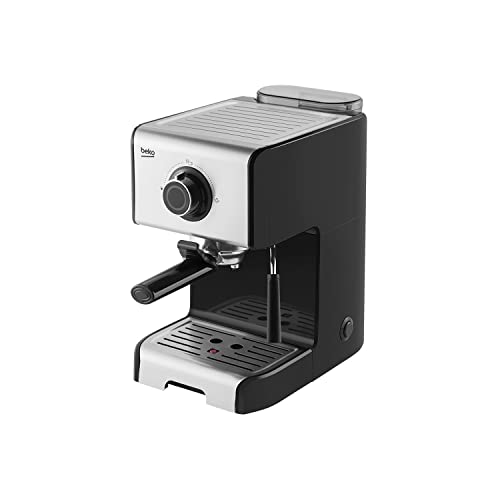How to Build a Professional Espresso Machine
This is a fantastic option for cafes and coffee shops that wish to attract customers who are enthusiastic about espresso and barista skills. It's the official machine for World Barista Championships and it really shows.
The barista can refill the reservoir of water throughout their shift. The machine also features steam wands that cool-touch as well as hot water taps for tea.
Water
A commercial espresso machine needs to be able to create a large volume of espresso-based drinks in a timely manner. These machines are usually made of stainless steel, which is durable and resistant to scratches and breaks. These espresso machines are also simpler to maintain and clean.
Lastly, a good quality machine will have a separate shut off valve for the water line to avoid the formation of limescale. This will ensure that any repairs are only limited to the affected parts of the machine and will not impact the rest your operation.
When you select your water ensure that you test it and treat it appropriately to get the best results. Remineralize water that has been distilled by adding some minerals. This could reduce its negative erosive properties and enhance its flavor, but it could also cause damage to certain machines. This is because the remineralized fluid will cause the boiler sensor to believe that the machine is full, even though it's not. This can cause overheating and possibly damaging the machine.
Grinder
The grinder is an essential part of a successful espresso maker. The grinder turns the raw, unground coffee bean into a finely -ground coffee that can be properly tamped into the filter basket to ensure the best extraction.
Professional commercial machines come with a grinder that can be programmed for various sizes of drinks. This guarantees consistency in results each time. Super-automatic machines go a step further and automatize the entire process from brewing, to grinding and dispensing. These kinds of machines typically get high scores in Lab tests due to their hands-free simplicity of use.
Semi-automatic or manual machines require more work from the barista but often the results are worth it. This model earned the 2022 Good Housekeeping Coffee Award for its dosing technology that weighs and distributes the right amount of ground coffee each time. It also comes with a low pressure pre-infusion system that allows for smooth extraction and the milk frothing wand, which did well in our tests for producing thick, rich steaming milk.
Temperature
The temperature is a crucial aspect in espresso. If the water temperature is not at a suitable level, it can cause extraction to be impeded and even result in an unpleasant cup.
Fortunately, high-quality espresso machines come with tools that will allow you to keep your water at the right temperature. machines espresso machines and regulates temperature of the water. Double boiler systems are a different way to do this. One boiler can be used to heat steam and water for tea, while using another to heat the water to brewing temperature.
Carles explains how these systems can be beneficial for both large businesses and baristas at home. They can help novices to dial in the perfect espresso drink because they are able to maintain a precise temperature and avoid numerous variables that could affect the flavor profile. It helps experienced baristas to create their shots exactly how they would like them.

Pressure
The pressure that the espresso machine makes use of can affect the quality of the coffee it makes. Many espresso drinkers notice that their beverages taste different depending on the amount of pressure they use, even if all other factors remain the same.
Most commercial machines use 9 bars of pressure to brew espresso. These machines also tend to be pump-driven rather than steam-driven. While there are higher-pressure machines they generally require a more intricate group head design that can take on the higher pressures.
While some espresso machines advertise 15 or 18 bars of pressure on their machines nine bars are usually considered to be the gold standard when it comes to creating consistently great brews. These machines that are higher pressure tend to be less expensive and designed for home use.
In comparison, 9 bar of pressure is 4 times more than the pressure exerted by your car tire. The greater pressure a professional espresso maker is able to apply, then the better it will be in bringing out the flavor of the coffee beans you love. It's worthwhile to invest in high-end machines that produce the most effective results.
Barista Skills
A barista should be able to take orders from customers quickly and efficiently. This is particularly important during busy times in the coffee shop. Having good customer service skills is also essential for building relationships with customers and generating more business for the shop. This could include recognizing regular customers, resolving issues quickly and remaining positive and helpful in difficult situations.
Baristas often need to be adept at multitasking as they must take orders as well as operate a cash register and share orders with colleagues and take phone calls all at once. This skill allows the customer to enjoy an enjoyable coffee shop experience by making sure that orders are delivered promptly.
It is essential for baristas to know the various styles of drinks that can be made with an espresso machine. This can be mastered by reading about the various kinds of coffee, testing them in person, and watching videos on the internet. Many baristas find it helpful to take classes offered by various organizations.
